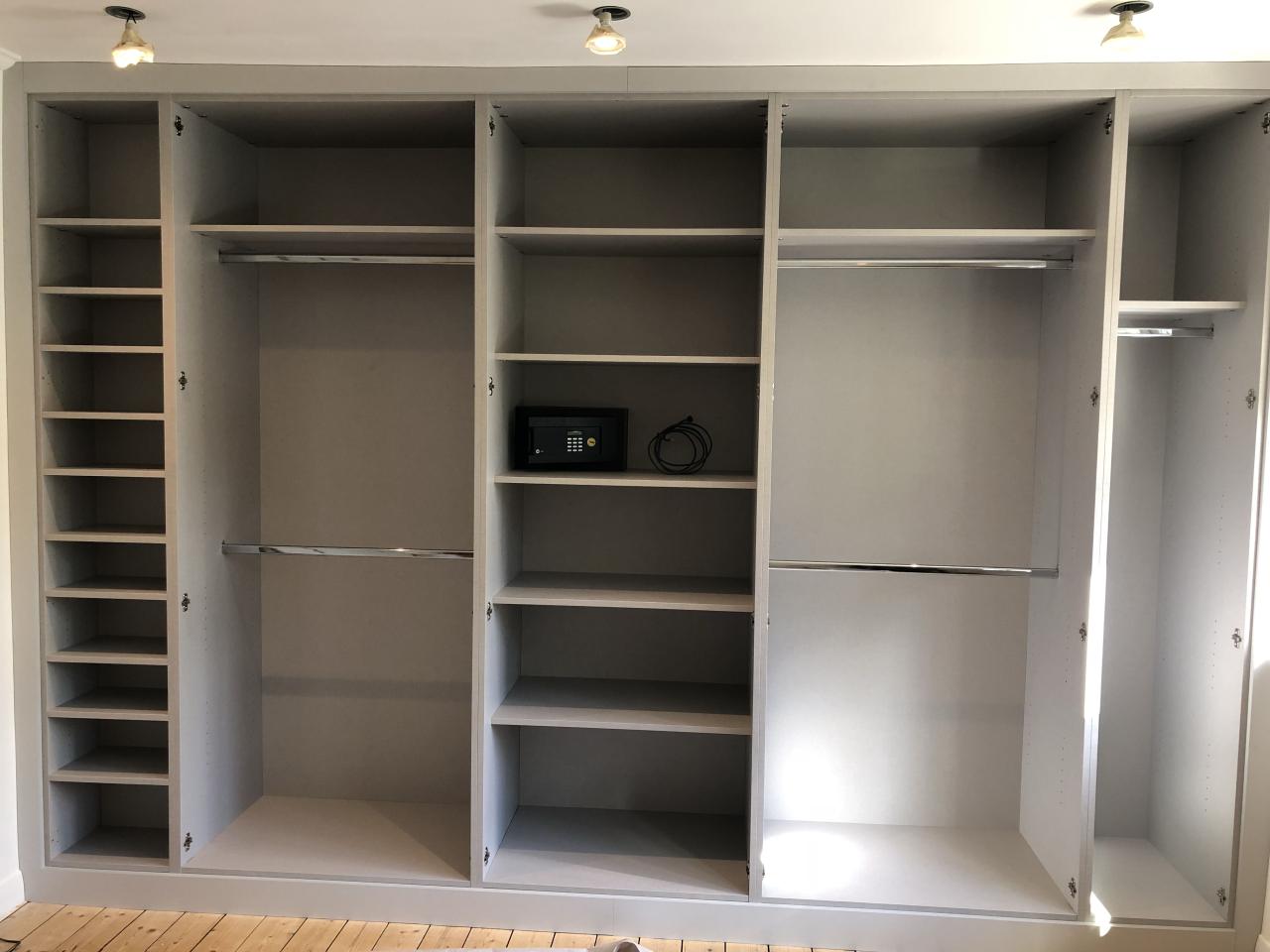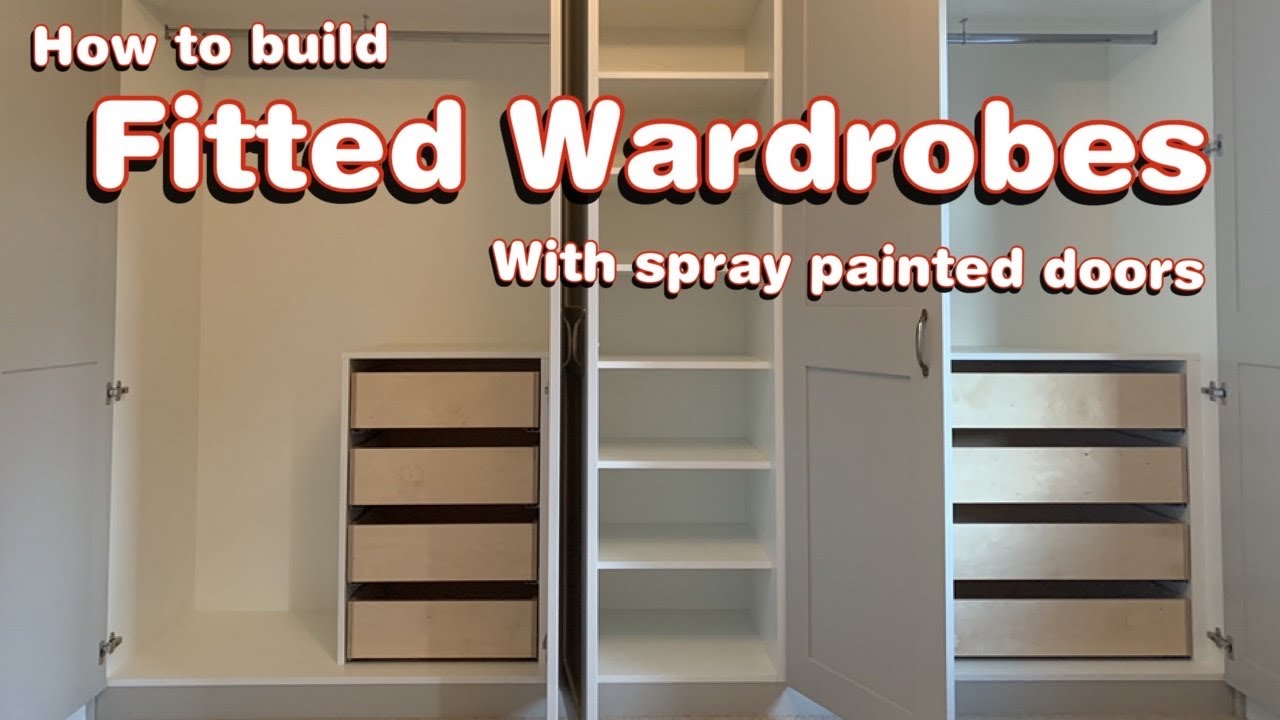DIY fitted wardrobes offer a unique opportunity to create custom storage solutions that perfectly fit your space and style. From maximizing limited closet space to adding a touch of personalized design, building your own fitted wardrobe can be a rewarding project. This guide will walk you through the process, covering everything from planning and design to finishing touches and maintenance.
Table of Contents
The journey begins with a meticulous plan, taking into account your specific needs and the dimensions of your space. You’ll delve into the world of materials, hardware, and construction techniques, learning how to build a sturdy frame, add shelves and drawers, and install doors that complement your vision. Throughout this process, we’ll emphasize safety precautions and provide valuable tips for budgeting and time management, ensuring a smooth and successful project.
Introduction to DIY Fitted Wardrobes

Building a fitted wardrobe yourself can be a rewarding and cost-effective project, offering a bespoke solution to your storage needs. This guide will help you navigate the process, from initial planning to the final touches.
Benefits of DIY Fitted Wardrobes
DIY fitted wardrobes offer several advantages over pre-made or custom-built options:
- Cost Savings: By purchasing materials and building the wardrobe yourself, you can potentially save a significant amount of money compared to hiring a professional carpenter or purchasing a pre-made unit.
- Customization: You have complete control over the design, size, and features of your wardrobe, ensuring it perfectly fits your space and storage requirements. You can choose the desired depth, height, number of shelves, drawers, and even incorporate special features like integrated lighting or a built-in mirror.
- Unique Design: You can create a truly unique and personalized wardrobe that reflects your style and taste, making it a standout feature in your bedroom.
- Sense of Accomplishment: Completing a DIY project like a fitted wardrobe can be a satisfying experience, giving you a sense of pride and accomplishment.
Challenges and Considerations
While building a fitted wardrobe offers numerous benefits, it’s important to acknowledge the challenges involved:
- Time Commitment: Building a fitted wardrobe requires a considerable amount of time and effort, especially for first-time DIYers. Planning, measuring, cutting, assembling, and finishing can take several days or even weeks depending on the complexity of the project.
- Skill and Experience: A certain level of carpentry skills and experience is necessary to successfully build a fitted wardrobe. If you are a beginner, it’s advisable to start with simpler projects or seek guidance from experienced DIYers or professionals.
- Tools and Equipment: You will need various tools and equipment, including a saw, drill, measuring tape, level, and possibly a router or other specialized tools. Investing in quality tools can ensure accurate cuts and a professional finish.
- Materials and Costs: The cost of materials can vary significantly depending on the type of wood, hardware, and finishes you choose. It’s important to plan your budget carefully and shop around for the best deals.
- Space Constraints: Building a fitted wardrobe in a small space can be challenging, requiring careful planning and efficient use of available space. Consider the layout, door opening, and access to ensure the wardrobe is functional and convenient to use.
Steps Involved in Building a DIY Fitted Wardrobe, Diy fitted wardrobes
The process of building a fitted wardrobe involves several distinct steps:
- Planning and Design: This stage involves measuring your space, determining the size and layout of the wardrobe, and sketching a detailed design. Consider the number of shelves, drawers, hanging space, and any special features you want to incorporate.
- Material Selection: Choose the type of wood, hardware, and finishes that best suit your style and budget. Consider factors like durability, moisture resistance, and ease of maintenance.
- Cutting and Assembly: This step involves cutting the wood to size, assembling the frame, shelves, drawers, and other components. Use accurate measurements and tools to ensure a precise fit and sturdy construction.
- Finishing Touches: Once the wardrobe is assembled, apply the desired finish, such as paint, stain, or varnish. Add hardware, including hinges, handles, and drawer slides, and ensure everything is securely attached.
- Installation: Finally, install the wardrobe in its designated space, making sure it is level and securely attached to the wall.
Last Recap

Building a DIY fitted wardrobe is a journey that combines creativity, technical skills, and a touch of DIY spirit. By following these steps and embracing the challenges along the way, you can transform your space into a haven of organization and style. The satisfaction of creating a custom storage solution that perfectly suits your needs is truly rewarding. So, gather your tools, unleash your inner craftsman, and embark on the exciting adventure of building your own fitted wardrobe.
DIY fitted wardrobes can be a rewarding project, allowing you to maximize space and create a personalized storage solution. If you’re working with a limited budget, consider using a virtual machine like virtualbox windows 10 to run design software, which can help you plan and visualize your wardrobe before you start building.
Once you’ve finalized your design, you can move on to the exciting task of selecting materials and putting your woodworking skills to the test.
